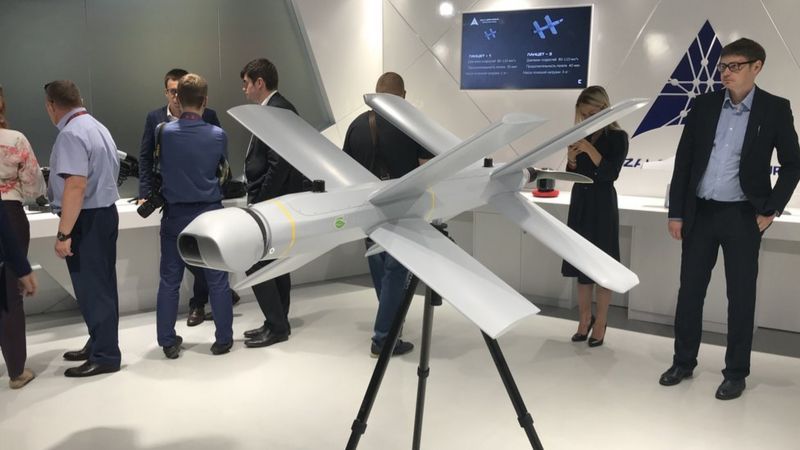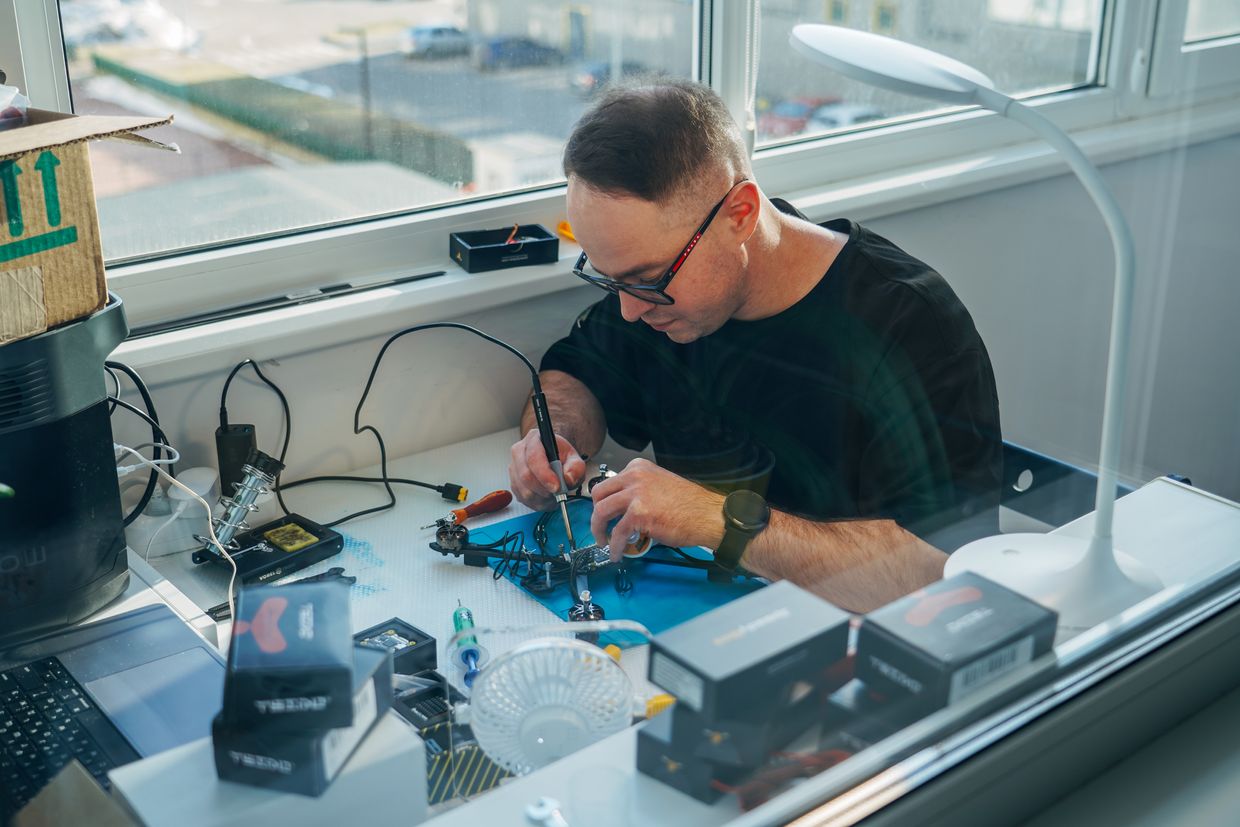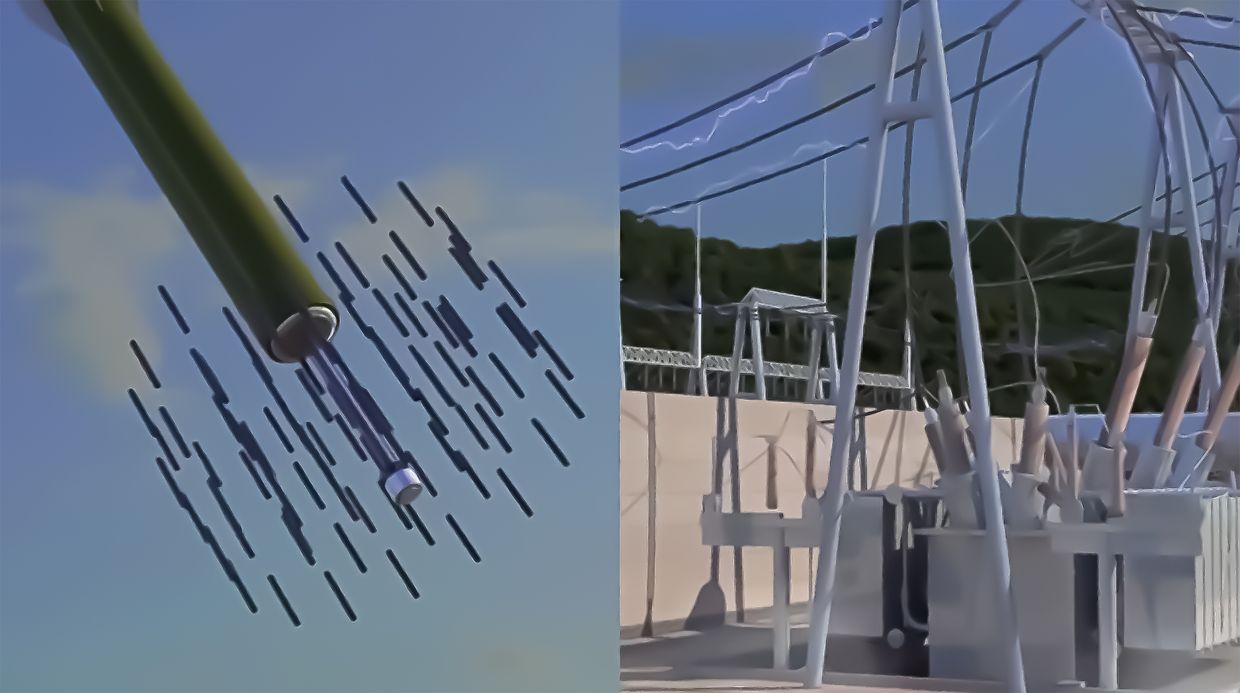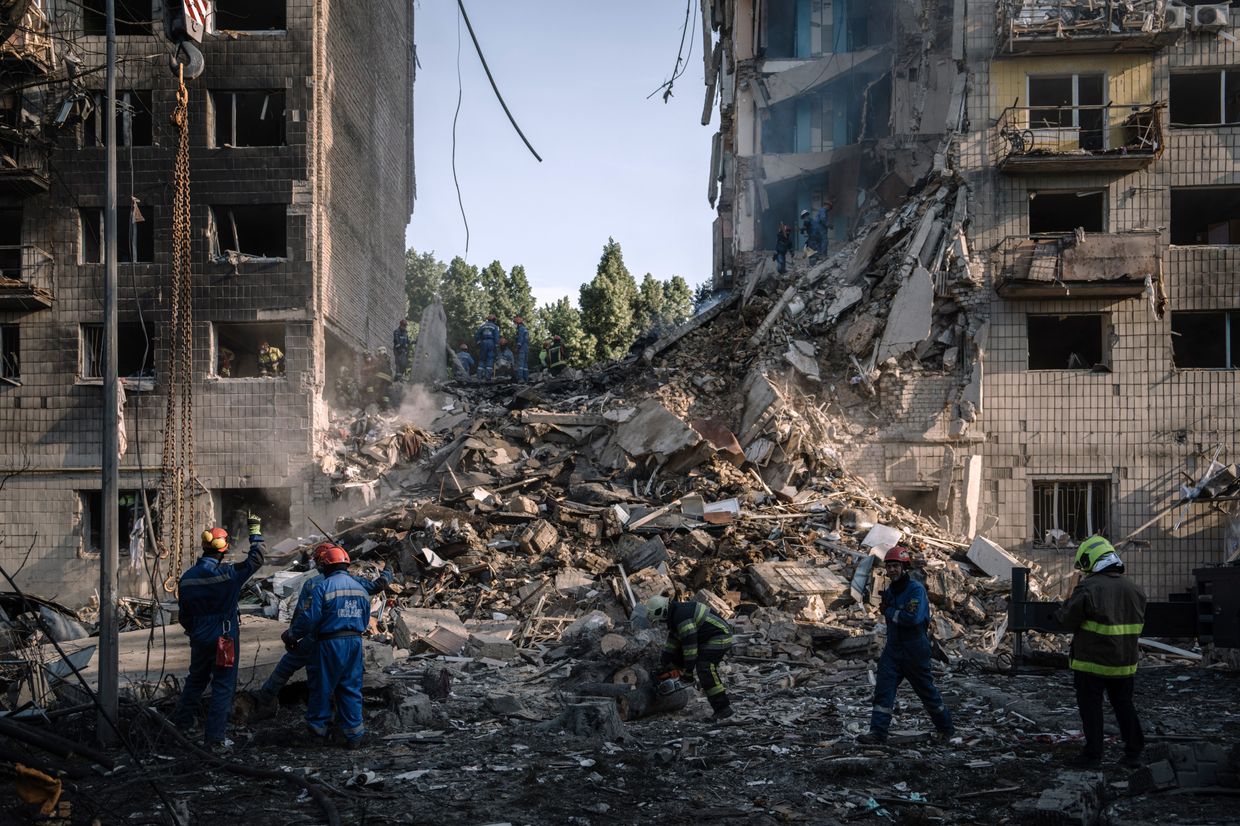President Volodymyr Zelensky announced on Feb. 7 that the Ukrainian military would create a separate branch of the Armed Forces dedicated to drones.
Throughout the full-scale invasion, Ukraine has been a drone tactics pioneer, from applying purpose-built military UAVs to weaponizing civilian models.
Last year, first-person view (FPV) kamikaze drones gained notoriety for their simple construction, low cost, and high damage. Unlike drones that are meant to survive, like battlefield scouts or grenade droppers, FPV drones are meant to fly into their target and explode.
To be cost-effective, they should be as cheap and bare-bones as possible.
These qualities open the possibility of non-engineers making drones at home, and the Ukrainian government began to promote initiatives like People’s FPV (“Narodny FPV”) that thousands have already joined.
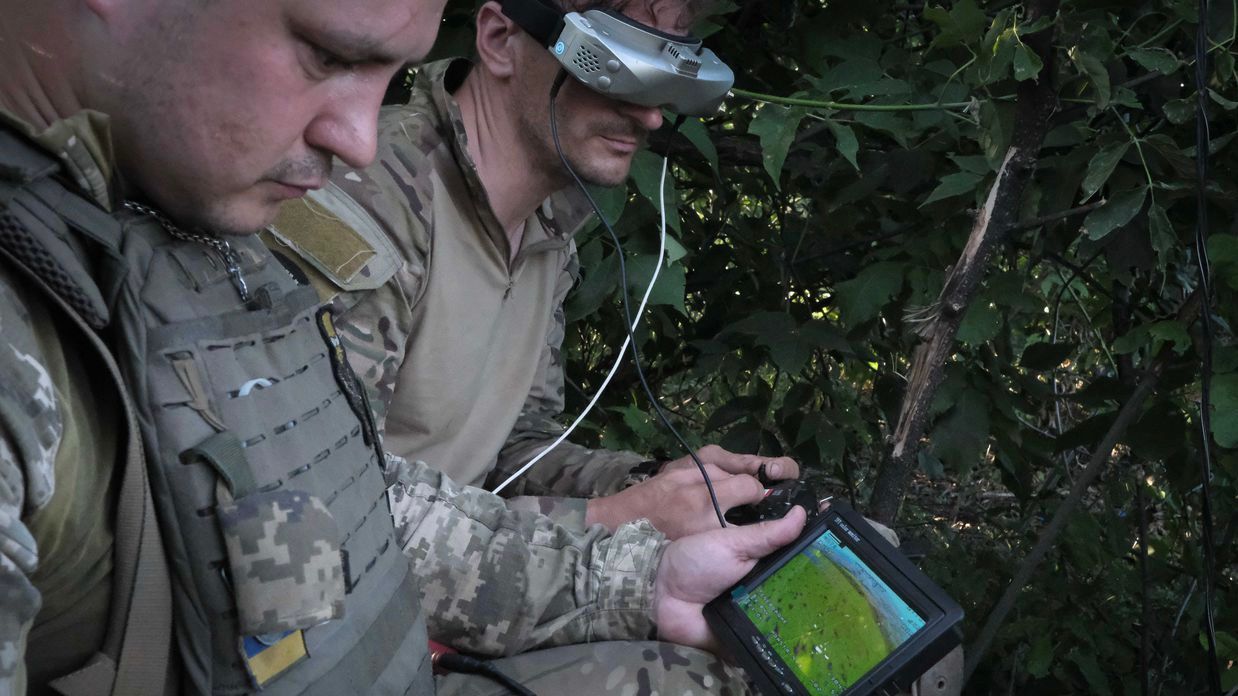
People’s FPV is an educational program by Victory Drones, a project aiming to train UAV pilots and provide the Ukrainian Armed Forces with all required modern equipment and technologies.
The People’s FPV course, in particular, teaches civilians with no engineering experience to put together FPV drones.
Digital Transformation Minister Mykhailo Fedorov invited Ukrainians to “create FPV drones at home” in January.


“Join in destroying the enemy with your own hands,” the ministry’s ad said.
However, among Ukraine’s UAV experts, opinions are mixed about the effectiveness of this program, compared to funding more businesses to make FPV drones instead. The outsourcing is also unlikely to meet Ukraine’s total demand for these machines.
Meanwhile, Russia is mobilizing private and state enterprises and a “volunteer” movement to keep FPV production growing potentially faster than that of Ukraine.
Home workshops
Vadim Ilchenko, an IT specialist in a Ukrainian EdTech startup, began to build drones in December. He did not have any experience before he learned about SocialDroneUA, a similar initiative to People’s FPV.
His workspace is one square meter of his balcony, filled with tools and parts.
“It took me around ten hours to assemble my first FPV drone,” he said. “I resoldered a lot, and waited for some stuff to be delivered. But now I can do it in three hours.”

People who join projects like SocialDroneUA or People’s FPV are given a video lecture series and a list of parts. It’s up to them to buy all the parts, put them together and send the drone in for testing, from where it’s either sent to the military or sent back.
Volodymyr Tulup, a dentist who joined People’s FPV this fall, told the Kyiv Independent that the main challenge is just finding the parts.
“It happens regularly that components are available online in the evening, and the next morning – they are not,” he said.
According to Tulup, the prices are much higher in Ukrainian markets than in the Chinese ones, so it is better to monitor AliExpress or contact manufacturers directly. But not all of them are ready to sell. They could also send defective components, “forget” to put things into the package, or jack up prices on scarce parts.
Tulup said buying all the required components would be easier if public or government organizations made the wholesale orders and committed to the logistics issue.
“For example, we request 5-10 items from the Chinese manufacturer. But it would be completely another deal and attitude if the order consisted of 20,000-30,000 pieces,” Tulup said.
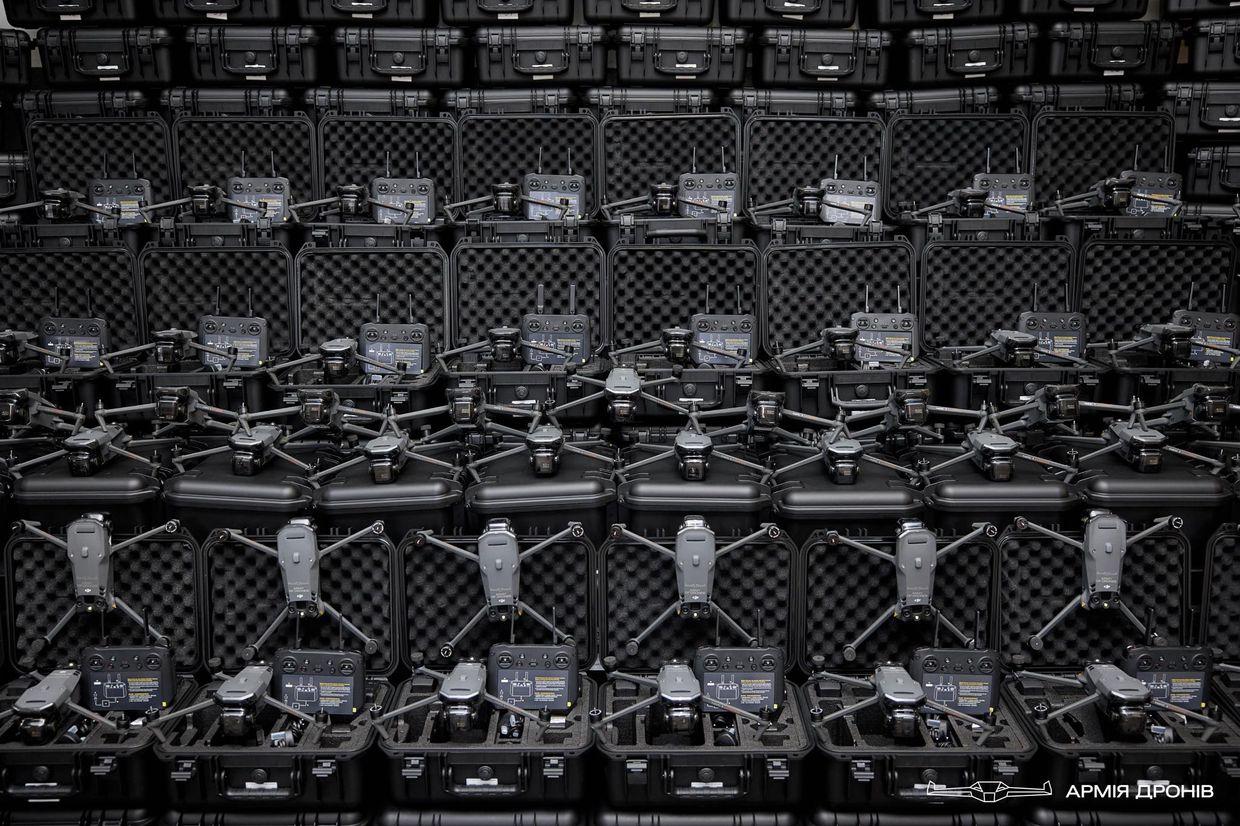
Despite the obstacles, interest among Ukrainians in home drone initiatives is growing.
One of the creators of People’s FPV, Maria Berlinska, told the Kyiv Independent that approximately 12,000 people have already registered for this project, and it is one of the most popular courses on the educational Prometheus platform, the Ukrainian analog of Coursera.
Berlinska, fought for Ukraine as an aerial reconnaissance drone pilot in 2014, and is now one of the top advocates for the rapid development of drones in Ukraine.
Limitations
However, the high popularity of initiatives like People’s FPV does not imply resolving the deficit of FPV drones in the Armed Forces completely, and some experts remain skeptical about the efficiency of such initiatives.
Prime Minister Denys Shmyhal said in October that over 200 companies are involved in drone production in Ukraine. Strategic Industries Minister Oleksandr Kamyshin said Ukraine would produce 1 million FPV drones in 2024.
Berlinska said that this number is far below the actual requirements, considering the development of Russia’s production and the growing demand among Ukrainian soldiers.
According to Berlinska, the Ukrainian Armed Forces need at least 300,000 FPV drones per month, almost 3.5 times more than the government's claimed capacity.
Maksym Sheremet, the founder of Dronarnia, an RnD hub specializing on repairing and improving a variety of UAVs, said the government is being populist, encouraging citizens to assemble drones at home instead of boosting state funding programs for private drone producing companies.
Sheremet is skeptical about homemade drones assembled by self-taught people that require testing and repairs and could create a supply shortage on the market for valuable components.
“I have not gotten any financial help from the government since the beginning of the full-scale invasion. Instead, recently, one of my drones’ components shipments was stuck on the border as it required customs clearance,” he said.

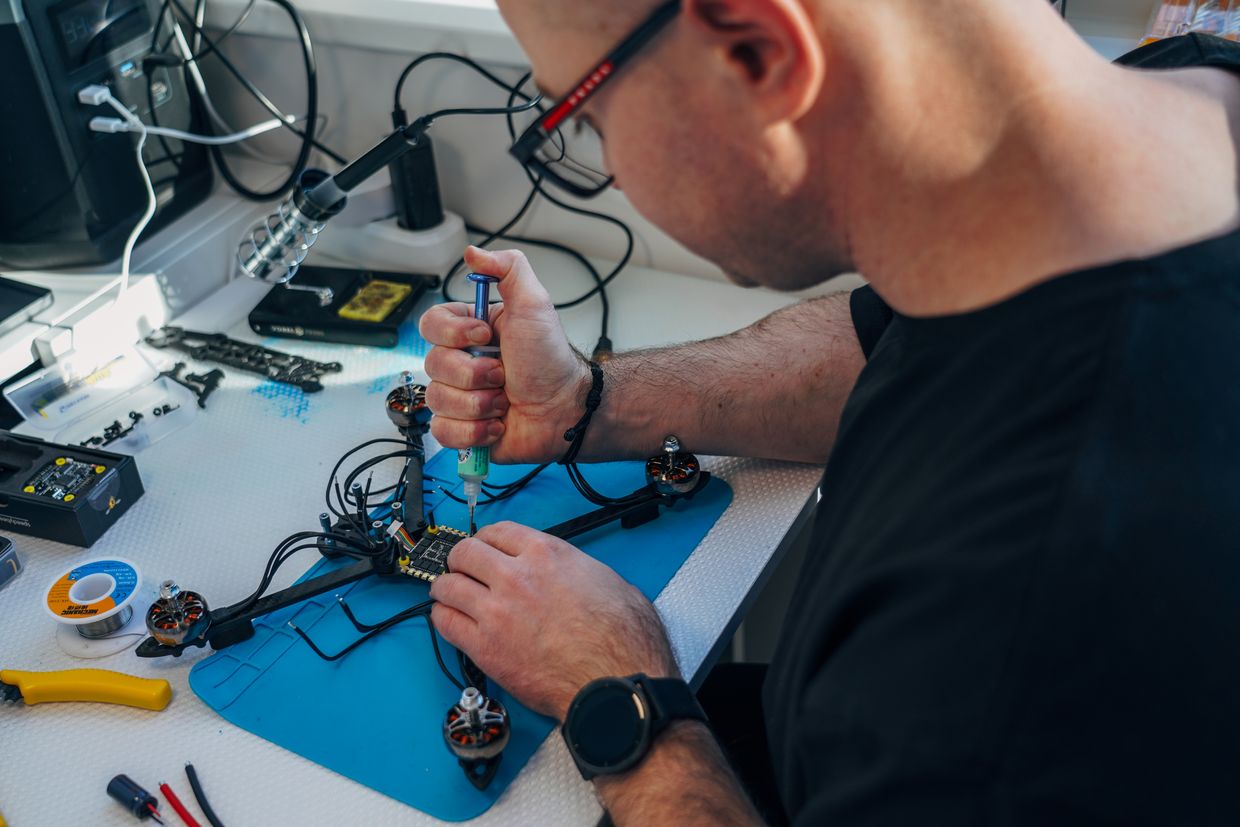
“A lot of supporting mechanisms from the state are missing.”
Berlinska confirmed some of these obstacles as well.
Ukrainian drone manufacturers have to talk to foreign suppliers and distributors, arrange logistics through third-party countries, and handle Ukraine’s financial monitoring and customs clearance, which takes months.
“As a state, we need to ‘absorb’ all the latest technologies available abroad,” Berlinska said.
“Recently, I came back from Denmark, and local specialists told me they were ready to share their knowledge and experience,” she said. “Nobody (from Ukraine’s government had ever) tried to reach them.”
Still, she is optimistic about homemade drones.
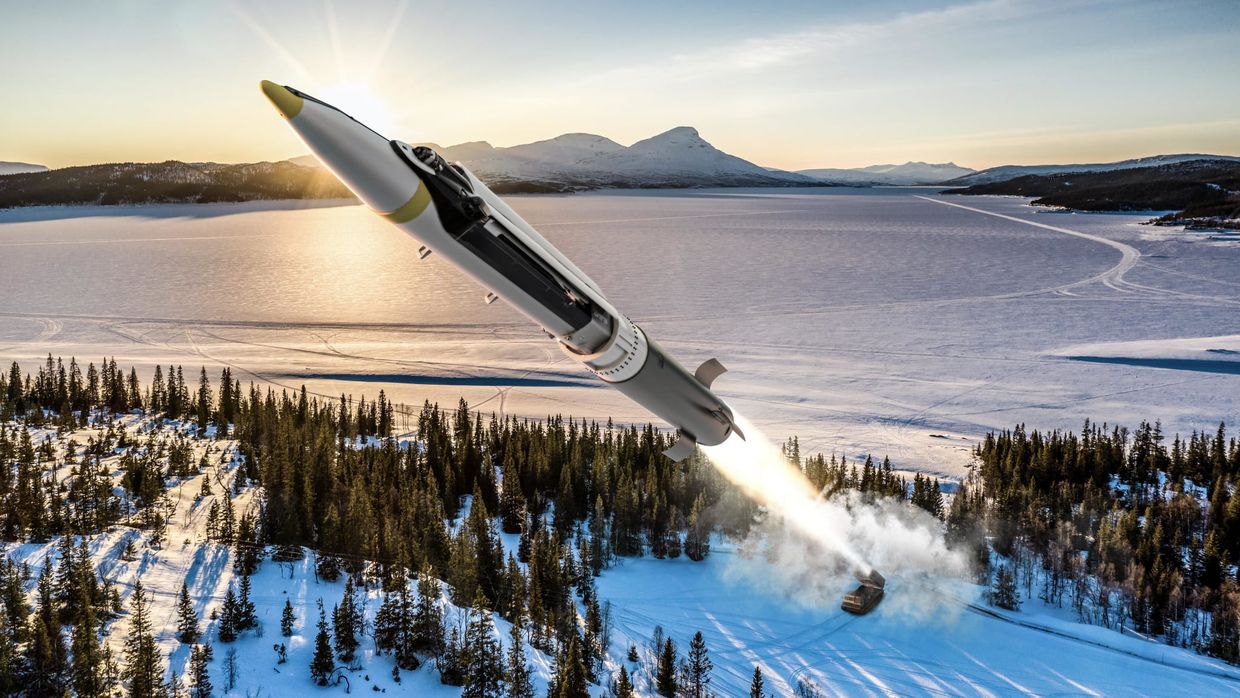
In her opinion, homemade production will never replace industrial capacity, but such projects as People’s FPV could encourage civilians to help the Armed Forces not only via donations. These initiatives also scout out people who end up making drones professionally.
“Our target is to prepare at least 20,000 specialists regarding People’s FPV. If only one percent of them start their businesses, it could lead to 200 new manufacturers. The main idea is to boost the field,” she said, adding that Russia is boosting its own.
“Russia pumps money into the private sector and has already launched production at state enterprises. It also buys the whole production lines and enterprises in China, getting all the components directly across the common border,” she said.
“Russia has already localized domestic drone production to be less dependent.”
Russia’s efforts
Ukrainian Army Commander Yuriy Fedorenko said in an interview with Ukrainian outlet Suspilne in December that Russia had up to seven times more FPV drones than Ukraine. Sheremet also confirmed a significant Russian Armed Forces’ advantage in FPV quantity.
“One group of Ukrainian soldiers launches 15-20 drones on average from one location (per day),” he said. “Russian soldiers could launch more. Ukrainian soldiers told me that around 45 drones attacked their dugout once.”
Russia is enhancing domestic drone production in all possible ways, through state enterprises and encouraging private initiatives financially and legislatively.
Tambov bakery is one such business that allegedly began to produce FPV drones along with bread loaves, Russia’s state TV channel Russia 1 said in October 2023.
The revitalization of the volunteer movement in Russia is also a contributing factor, CNA adviser Samuel Bendett, told the Kyiv Independent.
Russian volunteer initiatives could be financed not only by regular citizens but by regional governments or by the state, Bendett said. While it’s not always clear where one ends and the other begins, he believes there are many genuine citizen-funded efforts in Russia.
Russians can assemble drones in relative security and ship them to the front in large numbers. Many of the volunteering efforts also train FPV pilots, Bendett added. “And that is how we end up in a situation where Ukrainians are concerned that Russians simply have more drones.”
As artillery shell supplies from Western allies have decreased in recent months, the Ukrainian Armed Forces began to look for other ways out, relying on drones, which are cheaper but can damage heavy armament, like tanks, if used properly.
Drones cannot replace artillery, only offset its shortage. But the potential for innovation hasn’t been exhausted yet, Bendett said.
“We are at a point where we have achieved a certain parity between tactics, weapons, and systems. But this parity does not always hold for long.”
“There is always a breakthrough that is coming.”
